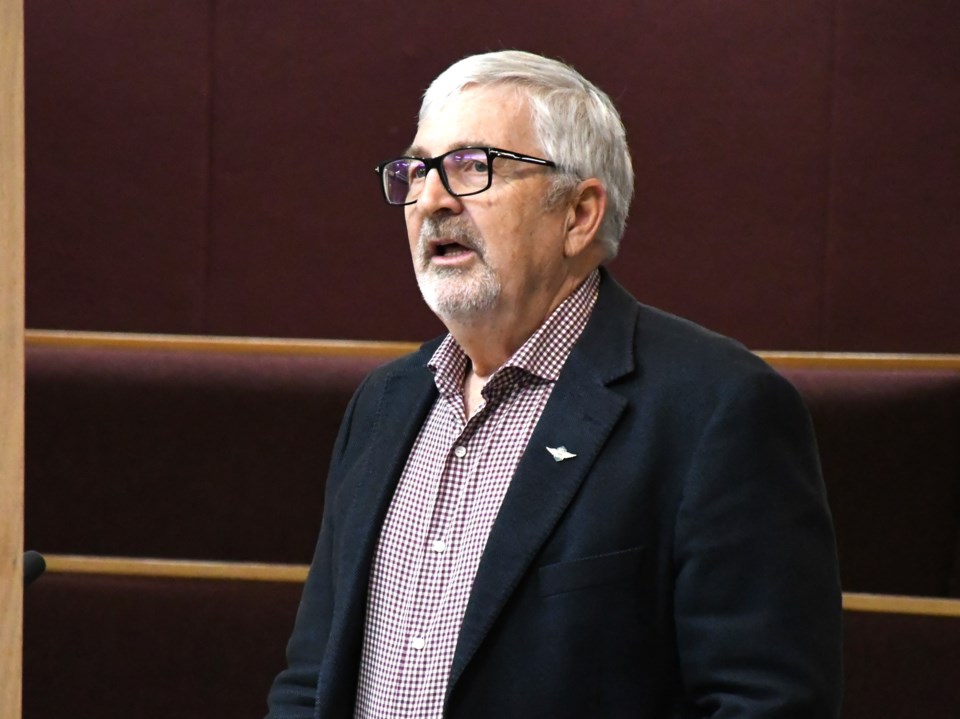While the Moose Jaw Municipal Airport has expanded by leaps and bounds since a new board took over in 2017, that group is continually looking at future enhancements.
“It’s a really good story to share, as we completed our expansion in 2022 and took a pause in 2023 to be able to do a study for our next phase of growth,” Greg Simpson, board chairman, said during a recent city council executive meeting while discussing the airport authority’s strategic plan.
Simpson highlighted the authority’s vision and mission, including one missional goal to support the Royal Canadian Air Force (RCAF) and other industry partners at 15 Wing Airbase.
He noted that when the authority wrote its strategic plan in 2017, members never anticipated how much they would be working with the RCAF or the partnership’s effect.
For example, more than 600 people visited last year to watch the Snowbirds, while training Harvards performed regular touch-and-goes. Moreover, the federal government will soon make a major announcement about a 15 Wing-connected contractor leading national air training efforts.
“This is going to be a huge impact. And we’re sitting in a sweet spot — I dare say — because of our location and proximity. We will be able to capitalize on this as we see the future of the training program come to life here in Moose Jaw,” the board chairman added.
When the authority began upgrading the venue — built in 1979 — in 2018, the airport’s infrastructure comprised a single paved runway that was 985 metres (2,954 feet) long and 25 metres (75 feet) wide, inadequate lighting and a supporting taxiway network, Simpson said.
Furthermore, the airport was home to Provincial Airways, Skydive South Sask., 12 aircraft hangars and 30 privately owned aircraft. However, there was no land to construct new hangars.
Since then, the authority has rehabilitated the original runway and the existing taxiways, constructed roughly 792.48 linear metres (2,600 linear feet) of new taxiways, extended the airfield lighting and power distribution system, constructed a hangar access road, built four hangars and improved surface drainage.
“The airport is growing; we have momentum,” said Simpson. “There is a lot of energy out there.”
In particular, airport-based operators support 22 full-time employees; two aerial applicator planes cover over 120,000 hectares (300,000 acres) of agricultural lands; 35 privately owned aircraft are based there; more than 3,100 flights — over 90 per cent were business-related — originated there in 2022, an increase of 70 per cent from 2015; and venue-based businesses employ over 400 people.
Besides existing clients, future infrastructure upgrades could support other groups, such as charter traffic.
Charter services want to come here, but they want a better apron so a large hangar can be constructed for bigger jets, said Simpson. Moreover, the RCAF wants hangars for its aircraft that arrive on the weekends.
The authority’s desired capital projects are expected to cost $4,350,000, including upgrades to the apron for parking, air ambulance, corporate, charter and military operations, a multi-purpose terminal and education centre, and airfield lighting upgrades.
Simpson added that the airport will host a fly-in event and breakfast on Saturday, Aug. 17, to celebrate the RCAF’s 100th anniversary.
Council comments
The authority’s strategic plan says it may need a longer runway if Saskatchewan Air Ambulance upgrades to bigger planes, said Coun. Jamey Logan. He wondered if the airport would lose that service if it didn’t have a 5,500-foot runway.
Simpson said if air ambulance upgraded to larger planes, the venue would require a runway at least 5,300 feet in length. However, that length is ideal for planes carrying maximum fuel and fully loaded and in ideal conditions; smaller planes just need to manage fuel and weight during takeoff.
“Crews can manage everything safely to take off on a 4,000-foot runway,” he added.
Data shows the medical service used the airport 51 times between 2018-19 and 2022-23; it used the airport 11 times last year.
Moose Jaw’s future economic development is tied to the airport, considering community companies use it to bring in more business, said Mayor Clive Tolley. He didn’t think residents realized how many local businessmen used the airport.




